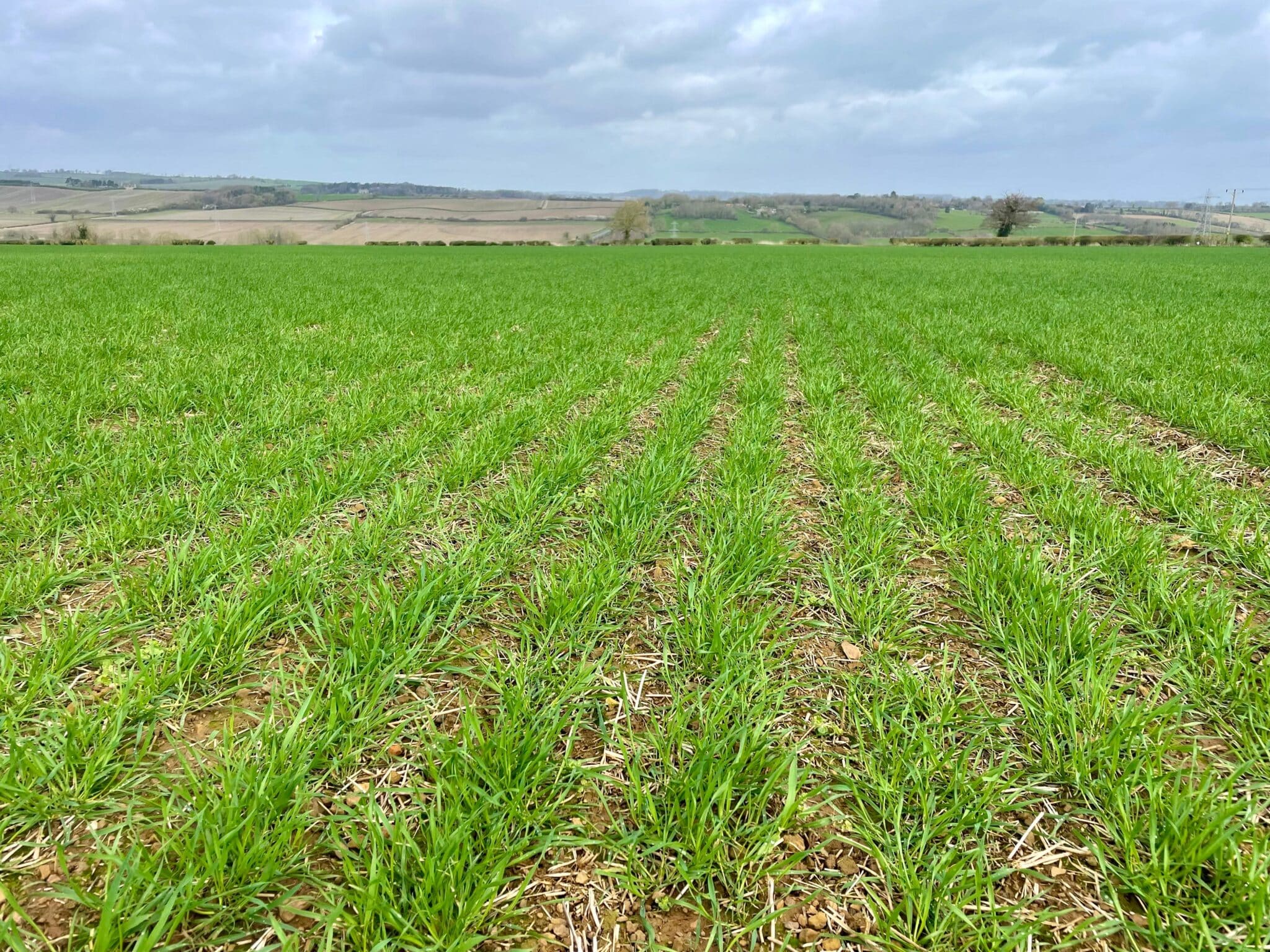“Mauling in spring crops is not the best approach” – we catch up with Rutland grower Marcus Struthers
 Tyler Farms, Redhill Farm, Barrowden, Oakham, Rutland
Tyler Farms, Redhill Farm, Barrowden, Oakham, Rutland- Area farmed: 1,100ha
- Soil types: Sandy silt loam to clay loam
- Key crops: winter wheat, winter barley, oilseed rape, spring oats, spring beans, sugar beet, grass
- Typical cultivations: Some ploughing before beans and sugar beet, targeted cultivations, direct drilling
- RAGT varieties: RGT Lantern
- Other enterprises: 2,200-ewe flock plus 200ha grass
Patience is starting to wear thin at Redhill Farm, but Marcus will wait for the right conditions before commencing his sizeable spring drilling programme.
Conditions remain tricky, as for most growers across the country, he says. “We have about 400ha of spring cropping to get through, about one-third of our arable area, split between spring barley, spring beans, spring oats and sugar beet.
“The theory is to use these spring breaks to get on top of blackgrass/brome and to vary the cropping, which is based on a six-year rotation, to help bring our autumn drilling dates forward.
“Given the arable sector’s general economic outlook we need our winter crops to be doing really well. We can’t afford an average-drilled, open crop of wheat where we will be fighting weed pressure.
“There’s a lot to be said to getting seed in the ground, applying a decent pre-em/post-em herbicide programme and getting the canopy closed over in early spring.”
Spring drilling remains on hold and is likely to for a few days yet. “We haven’t turned the wheel, which is becoming a concern,” says Marcus.
“But spring crops need to go in right; mauling them in is definitely not the best approach. We still have a couple of weeks to go and then some questions might be asked, but at the moment we’re OK. We have two 6m drills, so we can cover the ground quickly enough when conditions improve.”
Marcus has tweaked his cropping, dropping spring wheat because of ergot and unsatisfactory yields and replacing it with spring barley. “We are on a good malting contract, which makes a decent margin,” he notes.
Other spring work is also mounting up. “Any order of priorities has gone out of the window, it’s all about where we can travel.”
All winter cropping had a first dose of nitrogen at the end of February into early March. “We made a bit of a mess in a couple of places but I think we’ve done more good than harm.
“We’re now halfway through our winter barley T0s and we’re hoping to get on with our OSR stem extension programme and the second dose of nitrogen as soon as conditions allow.”
Marcus and his team managed to establish 90% of winter cropping before the rains hit in October. A 40ha block of wheat judged to contain too much blackgrass was eventually drilled in late November.
Winter barley drilling started on 24th September, although this was very stop-start given the weather and didn’t fully get going until the end of the month. The first wheats followed on, direct drilled where possible though cultivations are targeted as necessary.
“Anything drilled early, mainly Dawsum, looks good in places, and RGT Lantern and Extase that went into trickier seedbeds a bit later. Now that first and second wheats have had some nitrogen they are starting to perk up well,” says Marcus.
“There’s very little difference between cultivation methods this year in terms of crop establishment – it’s more down to the type of ground and whether we rolled it.
“The Lantern particularly has survived quite well through the winter, including some drilled in the late block, along with some Cranium I’m trying.
“I’ve been growing Lantern for a number of years – it’s always done very well as a second wheat, it’s consistent and you know what you’re going to get.

“It tillers well in the spring, it likes being drilled early or late and, if you do pull back the drilling date it doesn’t get too far ahead of itself. At the moment I don’t see any reason to change.”

 Tyler Farms, Redhill Farm, Barrowden, Oakham, Rutland
Tyler Farms, Redhill Farm, Barrowden, Oakham, Rutland
